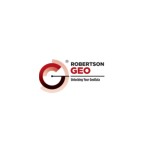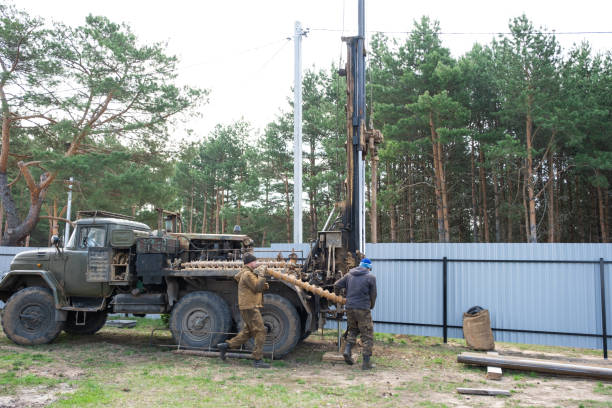In oil and gas exploration, understanding the geological formations encountered during drilling is essential for making informed decisions about where, how, and whether to develop a reservoir. One of the most powerful tools used in this process is wireline logging. It provides detailed measurements of the subsurface, helping geoscientists and engineers assess a formation’s potential to produce hydrocarbons.
This article explores the fundamentals of wireline logging, its key tools, data types, and its essential role in the exploration phase of the oil and gas lifecycle.
What is Wireline Logging?
Wireline logging is the process of lowering a suite of measurement tools into a wellbore on the end of a cable (called a wireline) to gather data about the surrounding rock and fluid properties. These tools record continuous, depth-based measurements as they move through the well, typically after drilling has paused or completed.
The data gathered provides a real-time or recorded log of various physical, chemical, and petrophysical properties of the formation, which are essential for reservoir evaluation.
Purpose of Wireline Logging in Exploration
During the exploration phase, wireline logging serves several key purposes:
- Identify hydrocarbon-bearing zones
- Evaluate reservoir quality and thickness
- Determine lithology and stratigraphy
- Estimate porosity, permeability, and fluid saturation
- Reduce drilling risk and guide future exploration activities
By providing high-resolution subsurface data, wireline logs improve the accuracy of exploration decisions, helping companies avoid dry holes and better target productive zones.
Types of Wireline Logging Tools
Wireline logging tools are categorized by the type of data they acquire. In the exploration phase, the following tools are commonly deployed:
1. Gamma Ray Logging
What it measures: Natural radioactivity in the formation
Use: Distinguishes between shale (radioactive) and cleaner reservoir rocks like sandstone and limestone.
Exploration value: Helps correlate stratigraphic layers and identify lithologic boundaries.
2. Resistivity Logging
What it measures: Electrical resistivity of rock formations
Use: Hydrocarbons are resistive; formation water is conductive.
Exploration value: Critical for identifying potential hydrocarbon-bearing zones and estimating water saturation.
3. Density and Neutron Porosity Logs
What they measure:
- Density log: Bulk density using gamma ray absorption
- Neutron log: Hydrogen content (indicator of fluids)
Use: Combined to estimate porosity and detect gas zones through log cross-plotting.
Exploration value: Helps evaluate reservoir quality and detect gas-bearing formations.
4. Sonic or Acoustic Logging
What it measures: Speed of sound waves through the formation
Use: Estimation of porosity and rock mechanical properties
Exploration value: Supports seismic correlation and identifies compacted vs. unconsolidated formations.
5. Caliper Logging
What it measures: Borehole diameter
Use: Detects washouts, breakouts, and irregularities in the borehole
Exploration value: Important for log correction and borehole stability analysis.
How Wireline Logging is Performed
1. Tool Selection and Deployment
The right combination of tools is selected based on the exploration objective. The logging toolstring is then lowered into the well using an armored cable.
2. Data Acquisition
As the toolstring moves up (and sometimes down) the borehole, it continuously records data, which is transmitted to surface systems for real-time monitoring or post-run processing.
3. Data Processing and Interpretation
Raw logs are corrected for environmental effects (like mud type and borehole diameter). Petrophysicists then analyze the logs to derive formation properties such as porosity, permeability, and fluid saturation.
Fundamental Log Interpretation Techniques
Wireline logs are interpreted using basic petrophysical principles. Some key relationships include:
1. Archie’s Equation (Water Saturation)
Used to calculate water saturation (Sw) from resistivity and porosity logs:
Swn=aϕm⋅RwRtS_w^n = \frac{a}{\phi^m} \cdot \frac{R_w}{R_t}Swn=ϕma⋅RtRwWhere:
- ϕ\phiϕ = porosity
- RwR_wRw = resistivity of formation water
- RtR_tRt = true formation resistivity
- a,m,na, m, na,m,n = empirical constants
2. Crossplot Techniques
Combining logs (e.g., neutron vs. density) can reveal lithology, porosity, and fluid type.
3. Shale Volume Estimation
Calculated from gamma ray logs to correct porosity and saturation readings in shaly formations.
Benefits of Wireline Logging in Exploration
Wireline logging offers several advantages, especially in the early stages of a field’s life:
- High data accuracy and resolution
- Non-invasive measurement (no need for formation destruction)
- Rapid acquisition and real-time decisions
- Lower cost than coring or extended well testing
- Enables early hydrocarbon detection
When compared to logging-while-drilling (LWD), wireline logging generally offers more detailed and comprehensive datasets, although LWD is preferable in certain real-time drilling environments.
Limitations and Considerations
While wireline logging is invaluable, it does have limitations:
- Deployment challenges in highly deviated or horizontal wells
- Environmental effects (mud invasion, borehole size) can distort readings
- Tool sticking or loss risks in unstable boreholes
- Interpretation complexity, especially in shaly or laminated formations
To mitigate these challenges, logs are often used in combination, and data is cross-referenced with core samples, mud logs, and seismic data.
Integration with Exploration Workflows
Wireline log data is not used in isolation. It plays a critical role in integrated exploration workflows, including:
- Seismic calibration
- Stratigraphic correlation
- Reservoir modeling
- Reserves estimation
Advanced software platforms help geoscientists interpret logs and build 3D models that support well planning, risk assessment, and economic evaluations.
Conclusion
Wireline logging is a foundational technology in oil and gas exploration. It provides high-resolution, in-depth data that helps exploration teams evaluate formations, locate hydrocarbons, and reduce uncertainty. By understanding the fundamentals of wireline logging tools and interpretation methods, professionals can better unlock the potential of subsurface resources.
As exploration continues to push into more complex and challenging environments, the role of wireline logging will remain indispensable for ensuring technical and economic success.






Comments